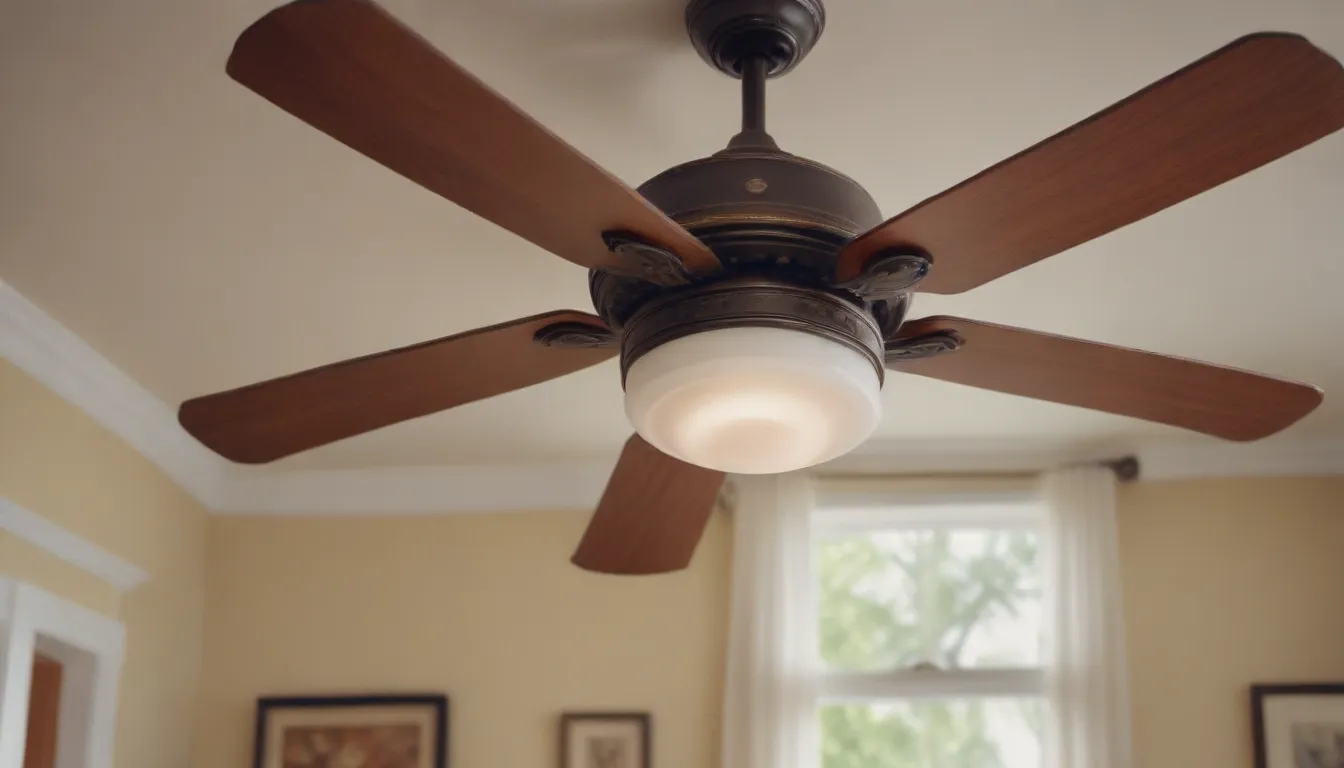Optimizing Your Ceiling Fan for Every Season

Are you making the most of your ceiling fan’s potential in both summer and winter? Understanding the correct rotation direction can make a significant difference in your energy bill and overall comfort. Let’s delve deeper into the optimal ceiling fan settings for each season and how you can ensure your fan is operating at its best.
Summer: Creating a Cool Breeze
In the scorching heat of summer, your ceiling fan can be a lifesaver. By setting the blades to rotate in a counterclockwise direction, you create a comfortable breeze that mimics the relief of a cool breeze on a hot day. This airflow doesn’t actually change the temperature of the room, but it does make it feel cooler by circulating the air more effectively.
How to Set Your Ceiling Fan for Summer:
- Ensure your fan blades are rotating in a counterclockwise direction.
- Feel for the breeze created by the fan, which should be blowing downward.
- Adjust the speed of the fan to find the ideal comfort level.
Tip: Not all ceiling fans follow the standard rotation guidelines, especially those manufactured overseas. If you don’t feel the expected breeze, try reversing the direction and note the difference.
Winter: Distributing Warmth Efficiently
When the temperatures drop, your ceiling fan can still play a crucial role in maintaining a comfortable environment. By switching the blades to rotate in a clockwise direction, you can help distribute the warm air that naturally rises to the ceiling. This creates a more even temperature throughout the room and can reduce the strain on your heating system.
How to Set Your Ceiling Fan for Winter:
- Make sure your fan blades are rotating in a clockwise direction.
- Feel for the warm air being pushed down towards the walls.
- Adjust the speed of the fan to maintain consistent heat circulation.
Finding the Fan Direction Switch
Depending on the type of ceiling fan you have, the method for changing the rotation direction may vary. Whether you have a pull chain, a remote control, or a smart fan, it’s essential to understand how to adjust this setting for optimal efficiency. Refer to your fan’s manual for specific instructions tailored to your model.
- Pull chain: Typically located on the fan itself, you can toggle the chain to change the rotation direction.
- Remote control: Use the remote to adjust the fan settings, including the rotation direction.
- Smart fan: Connect your fan to the internet for convenient control and customization options.
Conducting Your Own Rotation Test
In some cases, your ceiling fan may have unique settings based on its design. If you’re unsure about the recommended rotation direction for your fan, consider conducting a simple test to determine the most effective setting for each season.
- Start by observing the direction of airflow on the current setting.
- Switch to the opposite rotation direction and note any differences in airflow patterns.
- In summer, aim for a noticeable breeze in the lower part of the room, while in winter, focus on redistributing warm air towards the walls.
Remember, the goal is to enhance comfort and efficiency, so feel free to experiment with different settings to find what works best for your space.
Rotation Tests and Professional Recommendations
To further validate the importance of correct fan rotation, various tests have been conducted by experts and manufacturers. Hunter Fan Company, a leading manufacturer of ceiling fans, supports the notion of adjusting fan rotation based on the season for optimal performance. By following industry recommendations and conducting your observations, you can ensure your ceiling fan is functioning at its peak efficiency.
Tip: Websites like Hunter Fan Company offer valuable insights on selecting and using ceiling fans to maximize their benefits.
Conclusion
By understanding how to adjust your ceiling fan’s rotation direction for summer and winter, you can enhance both comfort and energy efficiency in your home. Take the time to explore different settings, conduct your experiments, and consult manufacturer guidelines to ensure your fan is operating at its best. Whether you’re cooling off during a heatwave or staying warm on a chilly night, your ceiling fan can be a valuable ally in maintaining a comfortable living environment year-round.





